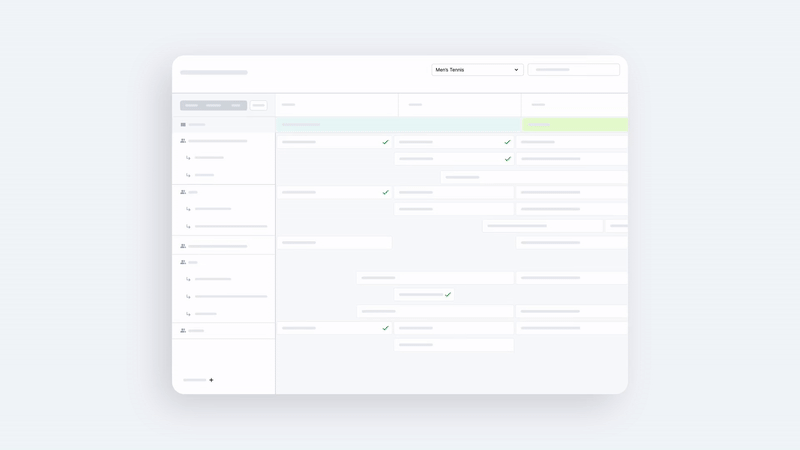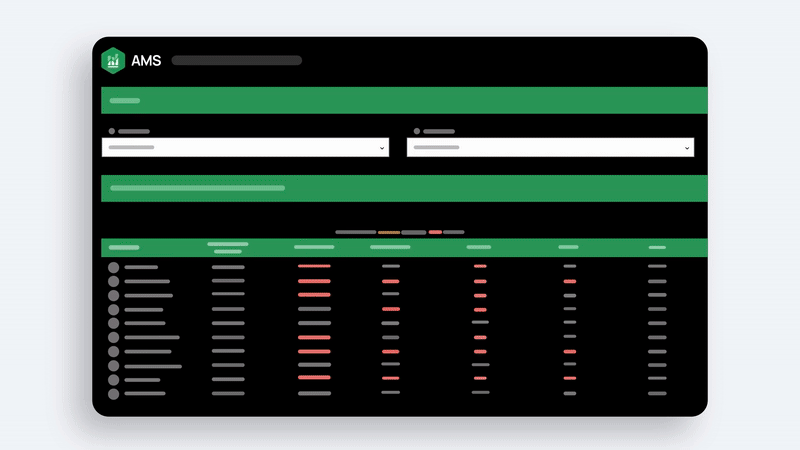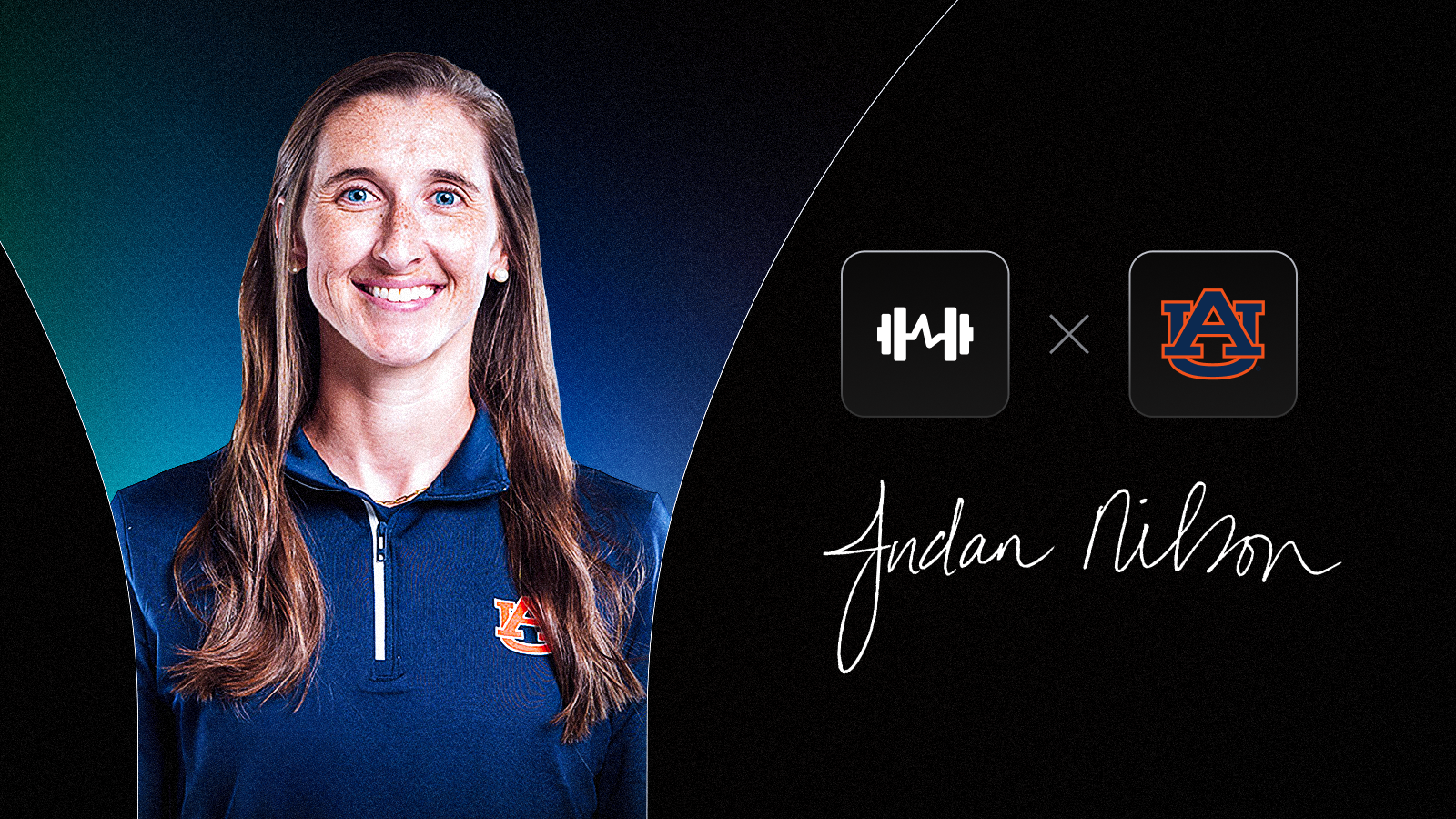Auburn University’s Olympic Sports Performance program showcases how modern technological approaches are enhancing its strength and conditioning department.
In just one year, Assistant Athletic Director of Olympic Sports Performance Jordan Nilson has helped Auburn reduce programming time by half and enhance efficiency across 17 Olympic sports. By adopting Teamworks S&C, Auburn replaced hours of manual work in Excel with a streamlined, connected system that empowers coaches to focus on what matters most—training and developing over 400 elite student-athletes—positioning the Tigers as leaders in performance innovation.

From Fragmented Systems to One Standard
Before Teamworks S&C, Auburn’s strength and conditioning staff, like many elite programs, leaned heavily on Excel and other programming software. Each coach had their own templates, formulas, and distribution methods, creating inefficiencies and inconsistencies.
“We were all doing things very differently,” Nilson recalls. “I wanted everybody to get on the same page as a staff.”
Excel had long been the industry standard, but it also forced coaches to spend hours on manual formatting and formula work—time that could have been spent coaching athletes. Nilson saw an opportunity to harness the staff’s expertise while removing the inefficiencies holding them back.
Teamworks S&C – Excel Without the Headaches
Auburn’s transformation began with a simple but powerful realization: strength coaches need technology designed specifically for strength coaches, not generic fitness apps trying to serve everyone.
“Teamworks S&C wanted it to be for strength coaches, designed by strength coaches,” Nilson remembers from her early conversations with the Teamworks team. “They weren’t trying to be like everybody else, and I saw them turn around and make those changes so quickly. I knew that they meant it.”
For Nilson, who admits she’s “not a computer or technology person,” Teamworks S&C delivered the perfect balance—familiar enough to feel like Excel, but without the technical complexity.
“It’s significantly easier using Teamworks S&C than Excel,” she notes. “It was close enough to Excel without needing to know the formulas. You can still toggle with your arrow keys, you can still type in stuff, but you don’t need to enter the formulas into all of the cells.”
Game-Changing Features That Drive Real Results
Auburn’s success with Teamworks S&C centers on features that directly address the daily challenges strength coaches face:
Smart Categorization: “I like that you can categorize all of the exercises. I love that you can categorize the exercises by sport,” Nilson explains. This allows coaches to maintain their methodology while ensuring consistency across the program.

Lightning-Fast Programming: “You can copy and paste literally anything and everything in there in 0.2 seconds and fill in a whole page in the blink of an eye.” Combined with preloaded rep schemes, this eliminates the tedious manual entry that plagued their Excel workflow.
Keyboard Efficiency: “I can’t use a mouse and be efficient. I need to be able to use the keyboard,” Nilson emphasizes. “A lot of the shortcuts in the keyboard are the exact same. I think that’s huge.”
Flexibility That Works: Rather than forcing one approach, Teamworks S&C gives coaches options. “I don’t make the staff use one way of distributing their programs. They choose how they want to distribute it. And I think that made everyone happier to know that they could still run their program how they wanted to and have multiple options.”

The Bottom Line: 50% Time Savings
The impact has been dramatic and measurable. “The time that I’ve saved using S&C has probably shaved down 50%—easily half of what I was using before,” Nilson reports. “Once you learn the system and you get in there, you can hash things out pretty quickly.”
Setting Up for Future Success
While Teamworks S&C has already supported Auburn’s strength and conditioning operations, Nilson sees even greater potential ahead.
With Auburn also utilizing Teamworks AMS, Sports EMR, and Nutrition, the streamlined programming process has created capacity for enhanced collaboration across Auburn’s performance team while bridging the gaps between previously siloed performance data.

“The biggest game changer for us was putting everything in one place so that we can all see what we’re doing as a staff, and we can also easily communicate that with sports medicine, with nutrition, with the physicians, with everyone that touches the student athlete,” Nilson explains.
This foundation, supported by their integrated Teamworks technologies, enhances their biweekly performance team meetings, where strength and conditioning, sports medicine, sports nutrition, and sports psychology collaborate to optimize each team’s training and development.
Leadership Through Innovation
Auburn’s approach with Teamworks S&C represents a new model for strength and conditioning programs—one that prioritizes:
- Staff autonomy while ensuring departmental consistency through Teamworks S&C
- Technology that enhances rather than complicates coaching methodology
- Streamlined programming that cuts time in half while improving quality
- Flexible distribution that adapts to each coach’s preferred workflow
The Future of Strength and Conditioning Programming
As Auburn continues to refine its use of Teamworks S&C, it’s setting a new standard for what’s possible when technology truly serves strength coaches.
“We’ve already got 10 products from Teamworks. So why not add this one last missing piece?” Nilson reflects on the decision to adopt S&C.
For Jordan Nilson and Auburn University, that decision has paid dividends—transforming not just how they program workouts, but how efficiently and effectively they can serve their 400+ student-athletes.
Auburn University’s adoption of Teamworks S&C highlights how technology built for coaches can transform strength and conditioning programs. By cutting programming time in half, enhancing staff collaboration, and creating a single source of truth across performance departments, Auburn has set a new benchmark for innovation in collegiate athletics. For Jordan Nilson and the Tigers, the future of strength and conditioning is not just about training athletes—it’s about leveraging innovative technology to maximize every opportunity for success.
